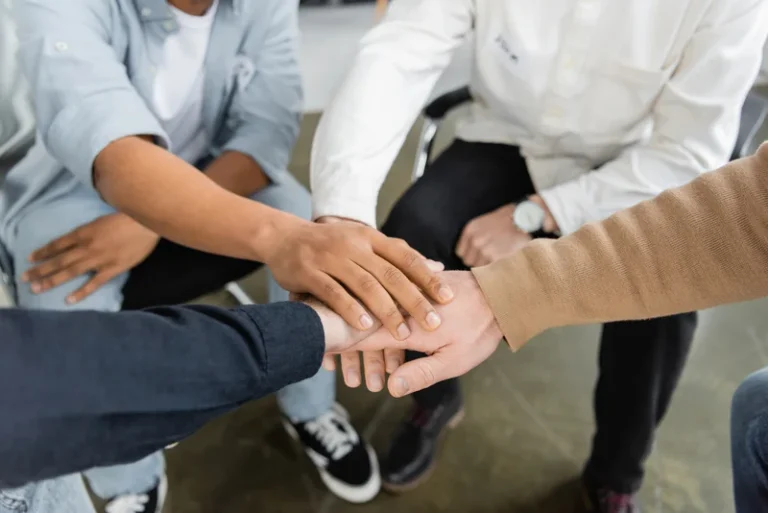
A US study, for instance, suggests that rates in the community may have increased by as much as 84% (3). The abuse of older persons is a serious public health problem in the United States. Certain factors may increase or decrease the risk of perpetrating substance abuse in older adults or experiencing abuse. Preventing violence requires understanding and addressing the factors that put people at risk for or protect them violence. Criminals may target older adults to steal money or personal information through a variety of scams.
Are there criminal penalties for elder abuse?
- When health professionals suspect elder abuse, they should contact the state office on aging, the ElderCare Locator (800–677–1116), or the National Center on Elder Abuse.
- Many older adults struggle with letting go of their independence or acknowledging that they may be unable to care for themselves.
- Disability-related abuse can be unique because the abuser may take advantage of the disability.
- While this type of abuse affects people older than 60, not everyone in this age group feels like they’re “old.” When you use age-defining terms, it may hurt someone’s feelings.
- Some common scams include government impersonation (claiming to be from IRS or Social Security), gift card scams, charity and lottery scams, “grandchild in trouble” scam, tech support and other computer-based scams.
Retirement and disability often render elderly individuals financially unstable and they may fear losing health care benefits or falling into poverty or homelessness. If they do rely on their partner for caretaking and support they may have fewer options after leaving. To support those impacted by elder abuse, NYC Aging partners with community-based Elder Justice programs in each borough who provide services and support. Elder abuse is perpetrated by a trusted individual and can be financial, physical, emotional/psychological, sexual, and caregiver neglect.
Get Legal Help for Different Types of Elder Abuse
Though as many as 1 in 10 older people are abused each year, a majority of cases go unreported for many reasons, including a lack of social supports needed to make reporting easier. A 2017 review of 52 studies in 28 countries from diverse regions estimated that over the past year 1 in 6 people (15.7%) aged 60 years and older were subjected to some form of abuse (1). However, a review of recent studies on abuse of older people in institutional settings (2) indicates that 64.2% of staff reported perpetrating some form of abuse in the past year. Elder abuse comes in many forms, including physical, psychological, and sexual abuse, as well as less obvious forms such as financial exploitation and neglect. Elder abuse is a common problem with complex social and medical considerations in which medical professionals are uniquely positioned to identify and intervene. This activity reviews the evaluation and management of elder abuse and highlights the role of the interprofessional team in improving care for patients with this condition.
Data Source and Study Selection
- Women or people assigned female at birth (AFAB) are more at risk of abuse than men or people assigned male at birth (AMAB).
- For older people, the consequences of abuse can be especially serious and recovery may take longer (4).
- APS programs, typically run by local or state health departments, provide protection for adults against abuse and investigate and substantiate reports.
Nearly 1 in 3 nursing home staff also admitted to emotionally abusing residents. Any of these elder abuse types can be devastating to older people and their families. Elder financial https://ecosoberhouse.com/ abuse in the U.S. costs older adults up to $36.5 billion each year. All 50 states have laws to prevent elder abuse, though the specifics of these laws can vary by state.
Social isolation and elder abuse
In general, the elders most at risk of abuse are nonwhite women with cognitive impairments who struggle in their daily activities. Psychological abuse, which includes emotional and verbal abuse, was also common, making up 16 percent of complaints in 2022. Understaffing is a chronic issue with outcomes such as higher death rates and higher rates of abuse and hospitalization. Understaffing also leads to more indicators of poor resident health, such as dehydration, weight loss, pressure ulcers, UTIs, and catheterizations. About 1.4 million-plus residents live in U.S. nursing homes certified by Medicare and Medicaid.
Furthermore, health professionals should devise patient-centered plans to provide support, education, and follow-up and should monitor ongoing abuse and institute safety plans. Inpatient treatment is an option for older adults who need around-the-clock care and support while they undergo detoxification and treatment for their substance abuse problems. This type of treatment offers a safe, structured environment with constant access to medical professionals, counselors, and other mental health professionals with expertise in treating older adults suffering from addiction. Defined as an intentional or negligent act that causes harm or serious risk of harm to an older adult, elder abuse can include physical, psychological, and sexual abuse; financial exploitation; and neglect and abandonment. Through implementing the CBPR approach, elder abuse intervention programs could build on strengths and resources in the community. Using the CBPR approach, the Family Care Conference (FCC) was developed in a northwestern Native American community.

More on Elder Abuse from OJP
Abuse can begin later in life or start earlier and continue into later years. There are many causes for late onset domestic violence, including stresses resulting from retirement, disability, shifting roles for family members and sexual changes. Older men and women are also more likely to experience domestic violence at this age if they enter a new relationship later in life.


Developing a multidisciplinary team (MDT) can be a solution for communities seeking to enhance their response to combat elder abuse and assist victims. Supported by OVC, the National Elder Abuse MDT Training and Technical Assistance Center provides case consultations, training, and technical assistance to MDTs nationwide. Understanding and addressing risk and protective factors can help identify various opportunities for prevention. If you or someone you love has been abused by a caregiver, whether at home or in a care facility, it’s important to share your concerns with a friend, doctor, or law enforcement official. If you aren’t totally sure that abuse has taken place, you should still express your concerns to another person.
- Under this definition, many actions (including physical violence, verbal threats, or a lack of care) could be considered types of elder abuse.
- This quiz is meant to help you better understand possible signs of abuse to keep you and your loved one safe.
- This Web site is funded through Grant 2020-V3-GX-0135 from the Office for Victims of Crime, Office of Justice Programs, U.S. Department of Justice.
- In general, the elders most at risk of abuse are nonwhite women with cognitive impairments who struggle in their daily activities.
- Many domestic violence campaigns and services don’t address late onset domestic violence and instead focus mainly on people between 18 and 45 years old.





 Accept Cookies & Privacy Policy?
Accept Cookies & Privacy Policy?
Comments